Welcome to Easy Going Gaming, a blog about MTG Commander! For my very first post, I figured I’d start with my very first deck: Glissa, the Traitor.

Glissa, the Traitor is a 3/3 Phyrexian Zombie Elf with First Strike and Deathtouch for . She has a triggered ability that reads, “whenever a creature an opponent controls is put into the graveyard from the battlefield, you may return target artifact card from your graveyard to your hand.”
Glissa was gifted to me by my good friends over 10 years ago. Originally a combo deck, today’s deck tech features Glissa as a grindy value engine that attempts to drain or overwhelm your opponents. Glissa does make a decent combo commander in that she makes an excellent blocker to deter your enemies from coming at you. You can loosely build around her triggered ability while hunting for any Golgari combo you’d like to build your deck around. Golgari can create a number of two or three card combos to close out games and given that it has black, you can run the best tutors for added consistency.
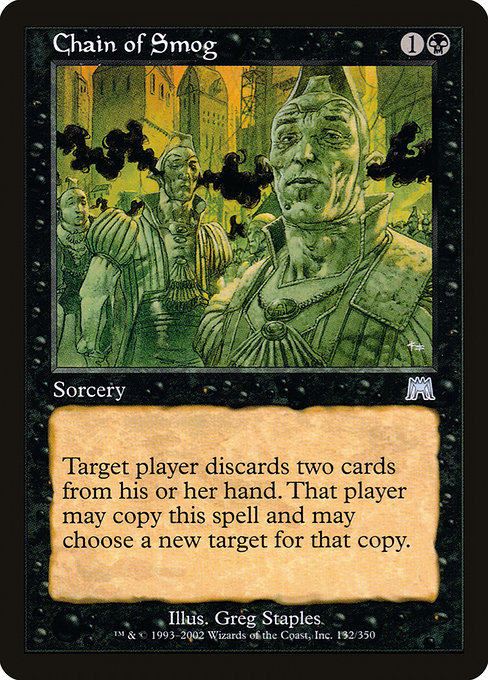




However! Today, we’re building Glissa around her triggered ability, focusing more on theme and grinding value and not specifically combo hunting. In order to make use of this ability, we need to build our deck with the following goals in mind:
-Get artifacts in our graveyard
-Get Glissa on the battlefield
-Trigger Glissa’s ability, preferably more than once per action
-Repeat steps 1-3, play cards that make it easier to loop and close out the game while looping
Since this is our value engine, we’ll look for ways to close out games with this loop of repeatedly playing the same artifacts with cards like Cabal Paladin or Marionette Master. Let’s dive in!
Getting Artifacts in our Graveyard
We’ll focus on cheap, value artifacts that sacrifice themselves in order to proactively fill our yard with artifacts.
Cantrip Artifacts
Artifacts that cantrip – sacrifice themselves to draw a card – for a total of 2 or less mana will be key here. This is the same rate as a Clue token. With Glissa’s ability recurring these from our yard, we’ll be able to play these multiple times in game. We’ll look to play them discounted with cards like Foundry Inspector to accelerate our gameplan. You can look for ones with alternate value as well – graveyard hate, mana fixing, etc. Most of these options are budget friendly too!
Check out this scryfall link for potential options to include in your deck!






Land Drop & Ramp Artifacts
From there, we can look at ways to make land drops and ramp. We’ll play some cheap artifacts that pull lands from our deck into our hands, as well as artifacts that can ramp us. Renegade Map gets us a land for 1 total mana but comes in tapped. Traveler’s Amulet costs 2 total but can pull a land on the same turn. Wayfarer’s Bauble and Moonsilver Key are solid includes. Wayfarer’s being an actual ramp card and Moonsilver Key allowing us to get basic lands or mana artifacts. Mindstone and Commander’s Sphere can both be used as both ramp spells and card draw, depending on what you need. Commander’s Sphere might be power crept out of commander, but there are times where this card will be a card draw engine for you in this deck!
A quick note on Moonsilver Key. You can use the Key to pull your Sol Ring or other mana rocks. It can also pull cards like Ashnod’s Altar and Krark-Clan Ironworks.
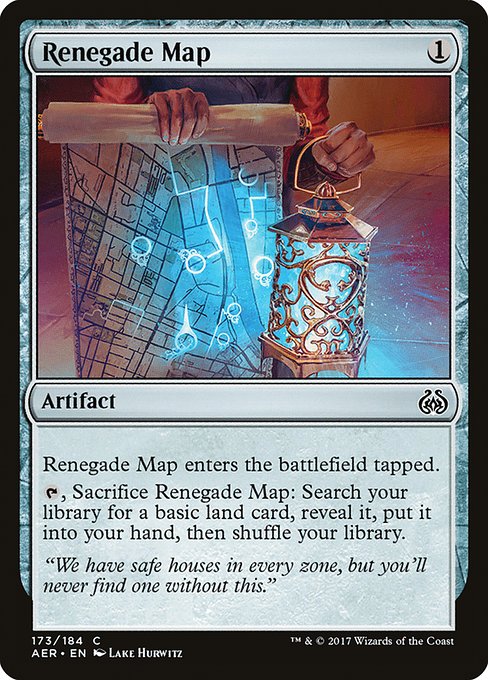



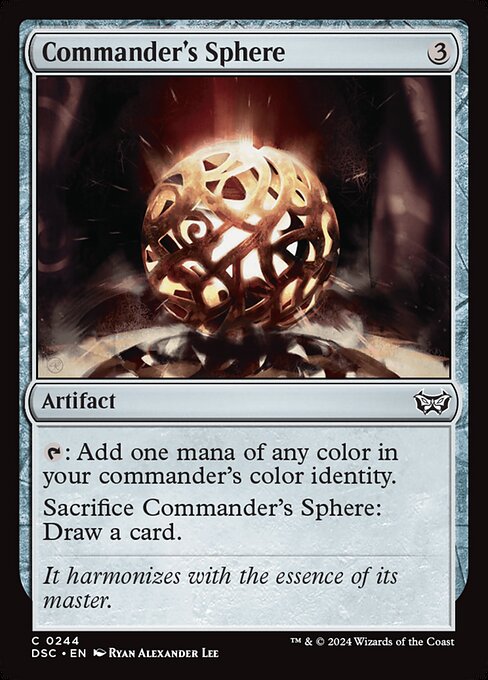
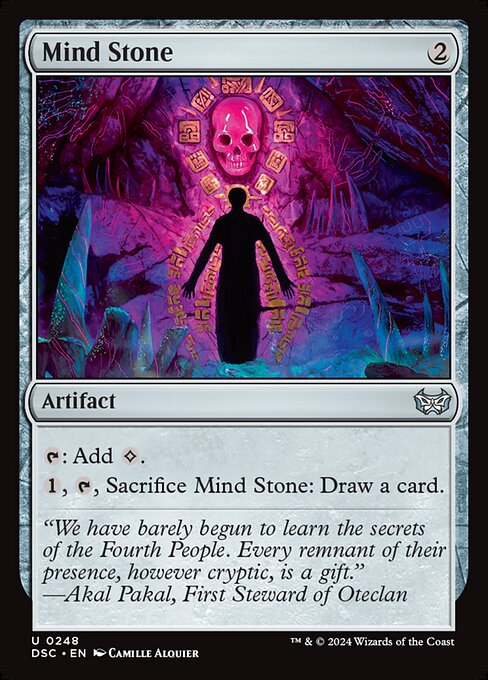
Artifact Creature Value
While our non-creature artifacts are focused on being cheap and providing incremental value, we’ll add a few self-sacrificing creature artifacts for various purposes as well. Burnished Hart is an excellent addition to the deck. 6 mana for 2 lands is quite expensive but we’ll be running cost reducers and other synergy in the deck. Being able to play this card multiple times in a game can actually cause you to run out of basic lands in your deck – it’s happened to me!
We can include some Artifact and Enchantment removal with cards like Haywire Mite and Sylvok Replica.
While not self sacrificing, Solemn Simulacrum makes an appearance in this deck, providing value when he is played and when he dies. We’ll have a few sacrifice outlets in this deck, so even if he can’t chump block for us, we’ll still look for ways to replay him.
If you’re looking for other self-sacrificing creatures, check out this scryfall link!
Early Game Setup into Playing & Triggering Glissa
Early Game Setup
One of the challenges of playing Glissa colored pips. Being an artifact deck running artifact cost reductions means anything with color requirements can be more difficult to cast. Glissa herself has no colorless pips in her mana cost being . Cards like Traveler’s Amulet and Renegade Map help us pull the specific colors of lands we need early game. Late game, they are fodder for our recursion engine.
Our early game is focused on stability. At the time of writing, this deck runs a criminally low land count of only 30 lands. However, the strong focus on cheap value artifacts means we go through a lot of our deck early and can consistently make our land drops. In commander, you almost never run one land hands, but with this deck, you might have one land and 3 value artifacts and feel safe to keep the hand.
You don’t need to play Glissa on or before turn 3. My favorite turn 3 play is either Kodama’s Reach or Cultivate – ramping you and ensuring you have a land drop next turn; these are the only non-artifact ramp spells in the deck.
You’ll look to play Glissa once you either need a threatening blocker, your opponents are starting to kill each other’s creatures, or have filled your yard with artifacts and are looking to get some Glissa triggers.
Triggering Glissa
To maximize the number of Glissa triggers per spell, we’ll include cheap cards that hit more than one target. Examples include Sheoldred’s Edict, Soul Shatter, Vona’s Hunger, and Tithing Blade. Each of these spells will typically net you at least 3 triggers if not more. We’ll also include targeted removal for dealing with specific threats. These spells, plus your opponents’ creatures dying incidentally throughout the game, gives you a steady stream of cheap value artifacts to play from the yard.
Lokhust Heavy Destroyer serves as a repeatable Fleshbag Marauder style symmetrical edict effect. Since he is an artifact, you play him and sacrifice him to his trigger and return him to your hand with one of the Glissa triggers you got from your opponents sacrificing creatures. His only downside is the costly requirement of 3 black pips, so he’s not necessarily a board wipe, but he does allow you to play a game of attrition and allows you to recur other artifacts at the same time.
There are plenty of edict effects that impact all opponents to choose from – check out this scryfall link for your options!
Ratchet Bomb can be immediately sacrificed to destroy all nonland permanents with mana cost of 0. In combination with Glissa, this single card can lock down most creature token based strategies. You’re likely to get numerous Glissa triggers off a Ratchet bomb, allowing you to not only get the Bomb back but a few other artifacts as well.



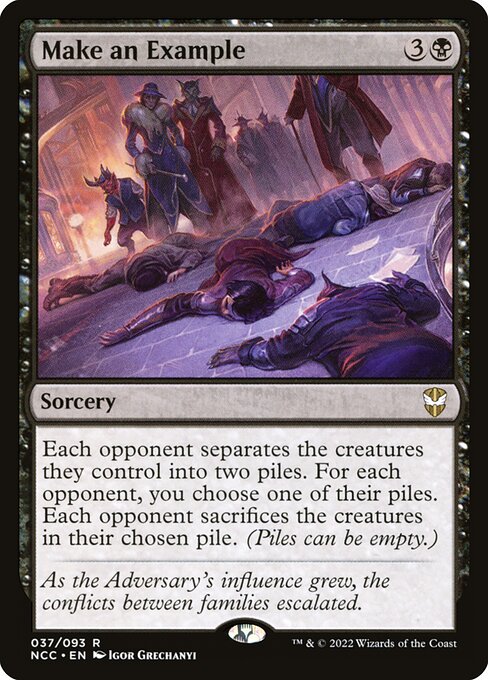

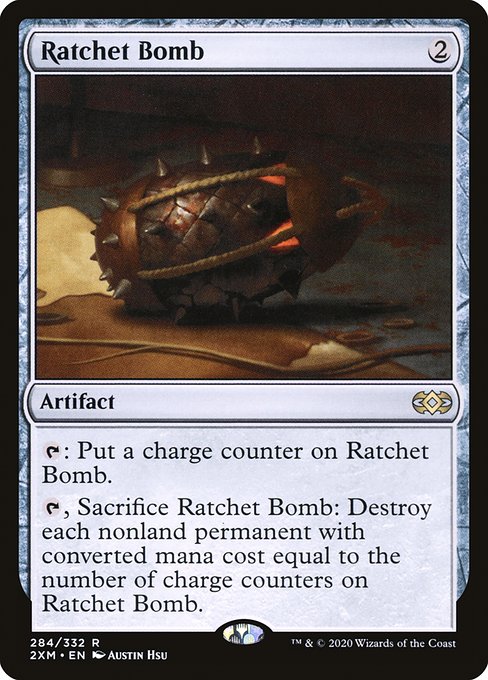
Replaying Artifacts – Moving to the end game
Artifact Cost Reduction
Within the deck you’ll find a number of ways to reduce the cost of playing your artifacts. Foundry Inspector, Jhoira’s Familiar, and Ugin, the Ineffable provide a flat reduction to artifact and colorless spells respectively. You also have Cloud Key and Semblance Anvil to reduce the mana cost of spells of your choice – typically artifacts. Having any one of these on the battlefield means most of your value artifacts are free to recast.
We want to use this engine of frequently casting, sacrificing, returning to our hand, and recasting artifacts to help us end the game. There are a number of cards that help us do this:
Slagstone Refinery grants us a tapped Powerstone token every time our artifacts are put into the graveyard, giving us a steady stream of additional mana to use on anything other than casting nonartifact spells.
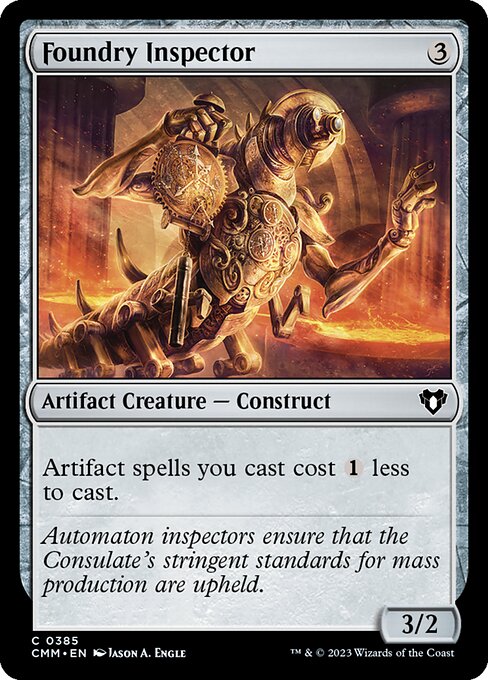





Draining Opponents by Recurring Artifacts
Disciple of the Vault, Marionette Master, Psychomancerand Agent of the Iron Throne help drain your opponents each time one of your artifacts go to the yard. In Disciple’s case, he triggers off any artifact, not just your own. Particularly handy against heavy treasure usage decks! Cabal Paladin deals 2 damage to each opponent each time you cast a historic spell.
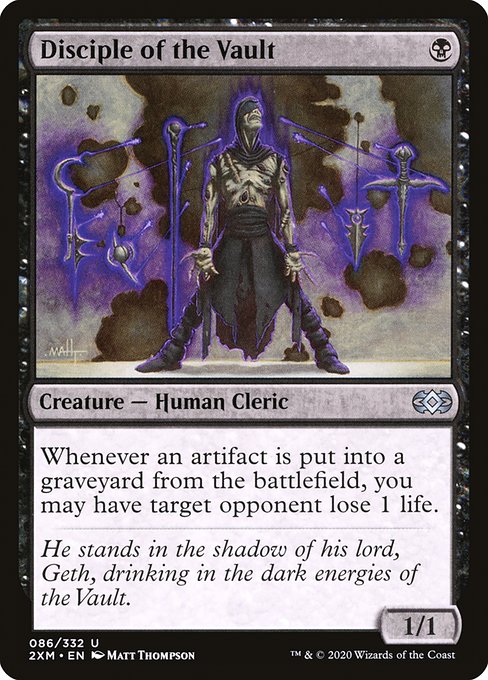



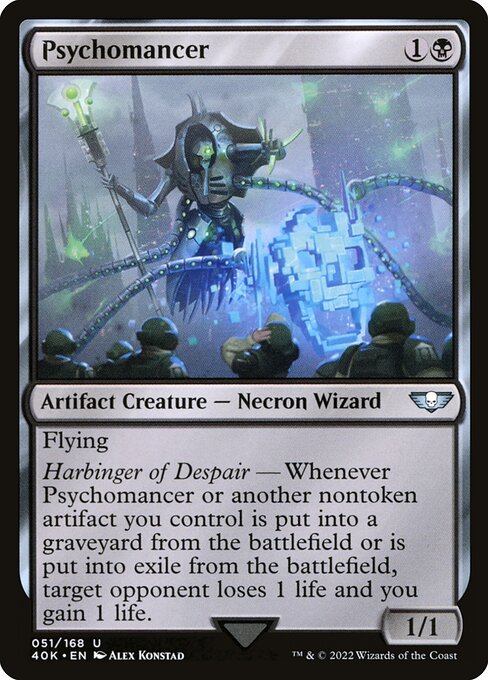

Other Artifact Recursion Synergy
Tormod, the Desecrator and Imotekh the Stormlord get you creature tokens whenever one or more artifacts leave your yard. While this does say “one or more” this triggers for each time you resolve Glissa’s trigger. Meaning that if you have 3 Glissa triggers from something like Sheoldred’s Edict, if you pull something from the yard for each trigger, then each trigger will also get you creature tokens.
Fangren Marauder gets you 5 life each time an artifact goes to the yard, not just your own. Lifegain is limited in this deck but if he’s out you will have an endless font of life. Thran Vigil can start to make your creatures buff as well.




Card Shoutouts
Playing at Instant Speed
Shimmer Myr allows you to cast any artifact as though it had flash. This can be particularly useful when you have more Glissa triggers on the stack but not enough artifacts in your yard or if you have specific artifacts you’d rather use more than once instead of others.
For example, say you have Glissa, Shimmer Myr and Foundry Inspector out, you cast Sheoldred’s Edict causing your opponents to sacrifice 3 creatures for 3 Glissa triggers. You have Conjurer’s Bauble, Renegade Map, and Lodestone Bauble in the yard. Conjurer’s Bauble is now free thanks to Foundry Inspector and you can tap sac it to immediately draw a card. You can resolve Glissa’s first trigger, returning Conjurer’s Bauble to your hand, flash in the Bauble, tap sac it, draw a card, resolve Glissa’s second and third triggers repeating the same with the Bauble, netting you three cards basically for free.
Shimmer Myr (or a Veldaken Orrery) can allow you to play reactively, holding up mana and playing on your opponent’s end step.
Non-artifact card value
Sarinth Steelseeker is an all-star in the deck. Each time you play an artifact you can look at the top card of your library. If it’s a land you put it in your hand. Otherwise you choose to either put the card back or in the yard. This will frequently allow you to throw artifacts into the yard or ensure you’re making your land drops. Given how often you’re going to be playing artifacts, this guy really helps you dig through your deck.
Wreck Hunter can be a useful card if you can hold up . You can use it after an opponent’s board wipe, or you can use it after one of your own. He can net you a substantial number of powerstone tokens if played at the right time.
Biotransferrence is an interesting card, transforming all your creatures into artifacts (most notably Glissa) but also getting you a 2/2 black Necron Warrior creature token each time you play any artifact or creature and costing you 1 life. This can net you a small army but also cost you a large chunk of your life. I opted to cut this card as my pod does pressure life totals and I only have one way in the deck to gain life and am not expecting to reliably get that card into play.
Unique Ways to Destroy Creatures
Argentum Masticore – This is kind of an odd card that doesn’t have a home in many decks but works quite well in Glissa. On your upkeep you must sacrifice this creature unless you discard a card. If you do, you can destroy a nonland permanent with mana value equal to or less than the discarded card. If you discard an artifact and destroy a creature, you get the artifact back. His other combat stats are decent and can serve as both a blocker and defender.
Armix, Filigree Thrasher attacks and allows you to discard a card. If you do, an opponent’s creature gets -X/-X where X is the total number of artifacts you have in play and in the yard, which is normally a large amount. This allows you to clear problematic creatures through indestructibility. If Glissa’s out, you get a card back (potentially the one you discarded!)
Executioner’s Capsule. This card is on most Glissa lists and for good reason. This is a repeatable way to remove problematic nonblack creatures. Consider that you’re not likely to remove more than a couple creatures a turn with its hefty round-trip cost. This card is a bit stifling – you’ll spend a lot of your time and mana slowly removing creatures with it. If you’re in a pod that doesn’t run much black, you could easily slot this in. Ultimately I decided to cut this card in favor of other removal options.
Viridian Longbow is an excellent equipment on Glissa, allowing her to tap and destroy something since she’s got deathtouch. It does paint a huge target on Glissa though, so buyer beware. Your whole deck revolves around your commander being on the battlefield, so keeping her threat level low is wise.
Adding Flavor via Salt
You can run Smokestack in this deck. Having cheap, repeatable artifacts and tokens means you should be able to stay ahead of your opponents in the symmetrical sacrifice game. You can always chose to sacrifice Smokestack itself and recur it later if you wish. You will probably get a groan or two when you play this card though!
Since you run a few creatures that self-sacrifice, you can play Grave Pact and other cards with its effect, like Butcher of Malakir and Dictate of Erebos. This allows you to have the same effect described above with Lokhust Heavy Distroyer but with your Haywire Mite, Burnished Hart, Sylvok Replica, etc.
Ashnod’s Altar and Krark-Clan Ironworks allow you to sacrifice creatures or artifacts for mana. This can help you get ahead on mana while also getting artifacts into your yard. You also have a few cards that generate creatures or powerstone tokens that could be also sacrificed to these for mana. Combined with Grave Pact effects, you have a powerful repeatable engine that only runs out when your opponents stop having creatures.
Culling Ritual can give you a big boost in mana, wipe out most mana rocks and dorks, tokens, etc; setting your opponents behind, getting you Glissa triggers, allowing you to play a number of cards in the turn you cast the spell.




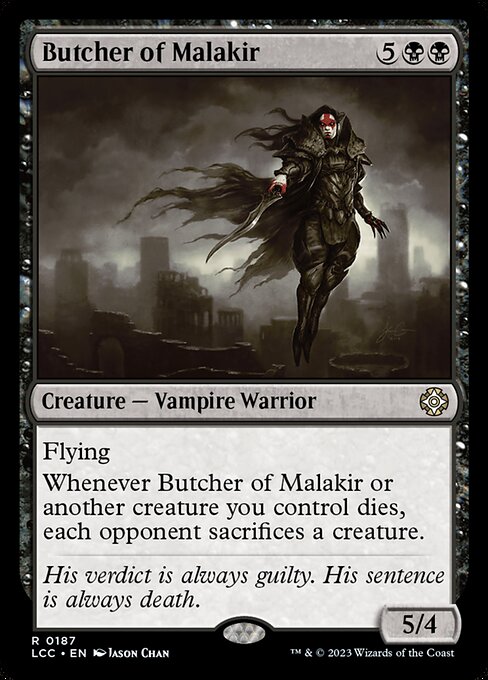

Winfinite Combo
This decklist does include one infinite combo with Wurmcoil Engine, Nim Deathmantle and Krark-Clan Ironworks. Sacrificing the Wurmcoil Engine nets you two mana and two 3/3 Wurms. Nim’s trigger on the stack, you can sacrifice a second Wurm for the 4 total mana you need to return Wurmcoil Engine to the battlefield with Nim attached to it. This means you end with Wurmcoil Engine and a 3/3 Wurm. You can repeat this to have infinite Wurms and them sacrifice them for infinite colorless mana. With a Grave Pact effect in play, you can lock down any creature based strategy. If you have one of your artifact based pingers you can just wipe out your opponents’ life totals.
Kuldotha Forgemaster and Inventors’ Fair are nonstandard tutors you could consider running if you’re looking for more consistency in the cards you’re getting.

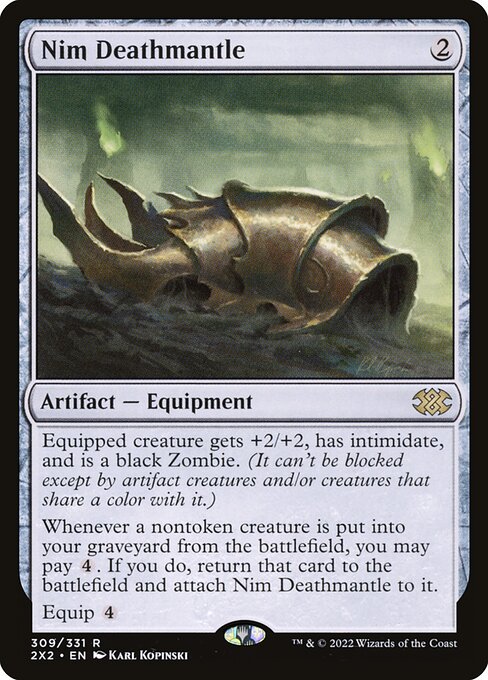



Other Considerations
Cranial Plating – there is obvious synergy here with all the artifacts we’re running and potential for artifact tokens. However, this deck isn’t heavy on evasion. Even if you’re coming in with a 20/2, without evasion, it will likely get chump blocked. This card is a beast on Marionette Master, making each artifact you send to your yard a potential nuke. However, without a reliable way to get them both on the battlefield, I opted to cut the card.
Deck Weaknesses
This deck relies heavily on Glissa being on the battlefield mid and lategame to generate enough value and loop enough artifacts to either create a small army or ping our opponents to death (or both). The value we build is incremental and tends to stay under the radar (“who plays traveler’s amulet?”) but if your opponents start to focus Glissa you’re going to need to adjust your list to protect her.
This deck cannot block fliers. You can put in some equipment that grants flying so that Glissa can also police the skies. If you’re consistently being beaten down by large groups of flyers, consider updating the decklist accordingly.
Sample Deck List
Commander
Glissa, the Traitor
Artifact
Candy Trail
Chromatic Sphere
Chromatic Star
Cloud Key
Commander’s Sphere
Conjurer’s Bauble
Dross Skullbomb
Krark-Clan Ironworks
Lightning Greaves
Lodestone Bauble
Mind Stone
Mishra’s Bauble
Moonsilver Key
Nihil Spellbomb
Nim Deathmantle
Phyrexian Furnace
Ratchet Bomb
Renegade Map
Semblance Anvil
Slagstone Refinery
Smelting Vat
Smokestack
Sol Ring
Soul-Guide Lantern
Tithing Blade // Consuming Sepulcher
Traveler’s Amulet
Urza’s Bauble
Wayfarer’s Bauble
Creature
Argentum Masticore
Armix, Filigree Thrasher
Burnished Hart
Butcher of Malakir
Cabal Paladin
Disciple of the Vault
Fangren Marauder
Foundry Inspector
Haywire Mite
Imotekh the Stormlord
Jhoira’s Familiar
Karn, Legacy Reforged
Kuldotha Forgemaster
Lokhust Heavy Destroyer
Marionette Master
Psychomancer
Sarinth Steelseeker
Scrap Trawler
Shimmer Myr
Solemn Simulacrum
Sylvok Replica
Wurmcoil Engine
Instant
Assassin’s Trophy
Beast Within
Golgari Charm
Heroic Intervention
Sheoldred’s Edict
Soul Shatter
Vona’s Hunger
Planeswalker
Liliana Vess
Ugin, the Ineffable
Sorcery
All Is Dust
Culling Ritual
Cultivate
Kodama’s Reach
Make an Example
Profane Tutor
Virtus’s Maneuver
Enchantment
Agent of the Iron Throne
Dictate of Erebos
Underhanded Designs
Land
Ash Barrens
Command Tower
Darkmoss Bridge
Exotic Orchard
9 Forest
Golgari Guildgate
Golgari Rot Farm
Inventors’ Fair
Jungle Hollow
Necroblossom Snarl
6 Swamp
Temple of Malady
Temple of the False God
Terramorphic Expanse
Tree of Tales
Undergrowth Stadium
Vault of Whispers


2 thoughts on “Glissa, the Traitor: The Ultimate Graveyard Value Grind”